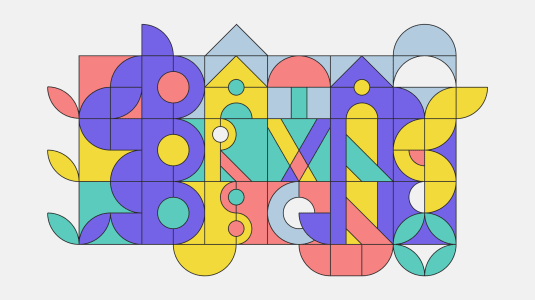AI and UX: Enhancing User Experience through Artificial Intelligence
Artificial intelligence has made an impressive impact on the world. With its versatility, it is revolutionizing almost every possible industry. Product design is also benefiting from this technology in several aspects, user experience being one of them. Therefore, in this article, we look closer at the relationship between UX and AI, discussing how the latter may be used to improve the former.

Table of contents
Can You Improve UX with the Help of AI?
Artificial intelligence is capable of things beyond a human – handling large data sets, spotting seemingly imperceptible patterns (e.g. AI-enhanced medical imaging), or even precisely identifying emotions. Similarly, AI has opened a gateway to numerous new possibilities regarding UX development, many of which we are just beginning to explore.
While new ways to utilize AI are being discovered every day, some established, proven methods of using AI in UX design already exist.
Test UX Designs with Artificial Intelligence
The first possible application of AI for UX design is in testing. Different testing applications for AI may require different types of artificial intelligence. The main advantage is that AI-enhanced tests can provide much more feedback than tests conducted without it, making it a highly desirable tool.
- A/B tests – This type of testing is prevalent but has one flaw – it focuses purely on two possible options as a whole. With AI, you may enrich your tests and analyze not only which version of your UX design is better, but also find out why – which elements stand out and which underperform. It may be so that while A is overall better, some B elements outperform it. With active AI-driven data analysis, you will spot this immediately, letting you transport the finest B features into your A version.
- User testing – Picking a target group, giving them your product, and asking for direct feedback are excellent ways to improve your UX design. But this method has one significant limitation – you will learn only as much as the test group tells you. With AI, or in particular Emotion AI, you can change that. Emotion AI analyzes human behavior based on audio, visual, in-text, or physical indicators. It provides complete information on how the users felt at each step of their journey through your product. This way, you enrich your feedback with data on the subconscious impressions that your product has made on the users, which you wouldn’t get otherwise.
Use AI for UX to Increase Accessibility
Generative artificial intelligence is more than just content creation or virtual AI assistants. It can be utilized to increase your product’s accessibility significantly, thus enhancing the experience of users with disabilities but also those from other countries or in different circumstances. How does this work exactly?
- For the visually impaired – In this case, you can use generative AI to enhance the work of your text-to-voice by creating audio descriptions (ADs) of the visual elements of your product. Instead of hiring or outsourcing a specialist, all you need to do is prompt your AI solution to follow the AD guidelines for the images in your digital product.
- For the hearing impaired – Generative AI is also good at subtitle creation. It may still have some flaws, yet if your product contains a lot of videos, you might not have the resources to subtitle each of them. With AI, this will be quick and simple, and you’ll improve the UX significantly, both for users with hearing disabilities and for those in circumstances that preclude the use of audio.
- For people speaking different languages – using AI-driven neural machine translation is an excellent way of improving the UX for those users who don’t speak the main language of your product, or who speak the world’s less common languages. In this case, you need to implement it cleverly – we’ve all seen terrible translations prepared by machines, so introducing this solution as standard is not an option. Instead, create a button that allows users to automatically translate the content into their language, informing them that it is a machine translation. This is an offer of additional assistance for users who don’t understand the language, rather than an imposed solution. You can make it even more intuitive by using geolocation to suggest the language automatically, further enriching your users’ experience.
Personalize User Experience
One of the strengths of artificial intelligence is data analysis. As such, it is a critical tool for creating personalized user experiences. With customer-centricity becoming one of the most critical product design principles, using artificial intelligence becomes a must.
Artificial intelligence can analyze the data currently collected on every user, allowing you to deliver content that is adjusted and personalized to their individual interests.
Any social media platform is an ideal example of that, so let’s take Facebook and Instagram as examples. The obvious advantage here is that users’ feeds are enriched with suggested content based on what they usually view on the platform. However, Meta takes it to another level with generative artificial intelligence added to the mix and its recently introduced AI functions:
- Sticker customization (WhatsApp, Messenger, Facebook, Instagram)
- AI photo editing (Instagram)
This way, these platforms allow users to further enrich and personalize their content according to their tastes, enhancing their experience even more and driving hype.
Optimize Performance with AI
Your app or website’s performance is a critical factor in creating a positive user experience; after all, nobody likes to wait ages for a page to load. AI can help with this aspect of UX design as well.
With artificial intelligence, you can monitor your app or website for its:
- responsiveness
- load times
- network latency
- CPU utilization
You can also set up your AI tool to act on these problems if one of them occurs – namely, to look for causes and solutions. Artificial intelligence’s data analysis capabilities will enable you to find the cause of performance issues much faster than a conventional method, allowing you to address them before they impact too many users.
Key Takeaways
So, how can you improve your UX with the use of AI? Let us summarize.
Firstly, you can introduce artificial intelligence to enhance your testing procedures; secondly, with AI, you can increase the accessibility of your product; thirdly, AI enables you to create more personalized content than ever before; finally, it helps you maintain the high performance of your app or website.
Are these the only potential advantages of using artificial intelligence for UX design? Definitely not, and the possibilities will only increase with time and with the further development of AI itself.
Share this article:













